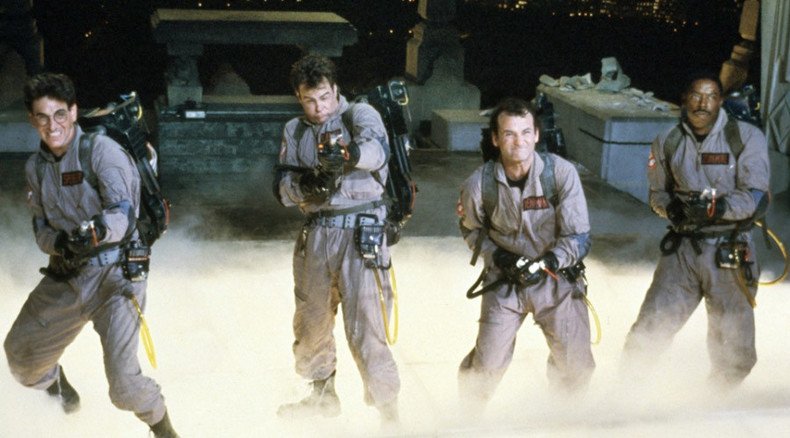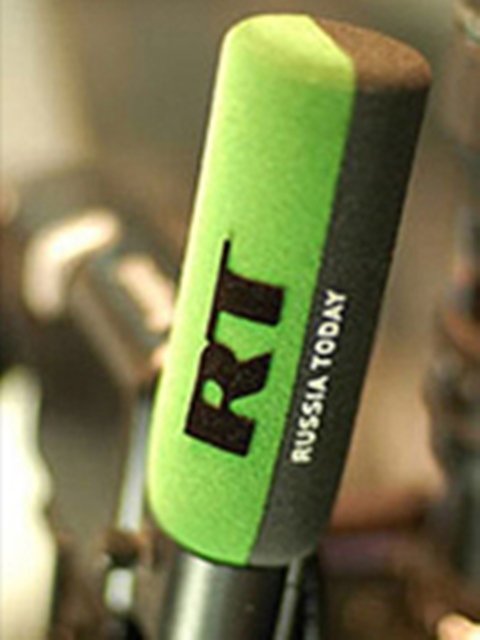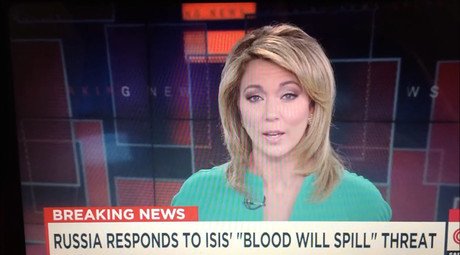There's something strange in the neighborhood: StratCom East's ghostly targets

The primary target of StratCom East, a new European Union information initiative, and its project Mythbusters, was supposed to be RT.
Bustin' should’ve made them feel good!
Yet, when it comes to finding fault with the Russian broadcaster’s reporting, the EU’s ‘Disinformation Review’ seems to be coming up short. In their first report, RT gets two bizarre and unrefuted mentions and in the 2nd, the network isn’t cited at all.
Russian foreign media services are a drop in the ocean compared to their Western competitors. There are literally thousands of them across NATO’s 28 member nations. State-funded and their private equivalents. Available on TV, in print, on radio and online. They are broadcasters, think tanks, bloggers, NGOs and so-called ‘citizen journalists.’ Some of them are extremely well-paid and others do it voluntarily. All of them united in a desire to expose “propaganda” - the catch-all phrase used to describe anything that contradicts the NATO narrative.
This dastardly “Russian propaganda” is usually defined as content from RT, Sputnik and – if Western mainstream media is to believed – about 50 online “trolls”.
Nevertheless, when forced to actually locate some tangible examples of alleged false reportage or disinformation, they can’t find very much.
Of course, all media has lapses and bloopers. Especially in a fast-paced 24-hour news environment. It happens to RT, just as it happens to The New York Times and the BBC and many others who on occasion might carry a story that turns out not to be 100 percent accurate.
The difference, however, is that when RT commits a blooper, it’s “Russian propaganda” - and replayed for years to come - but when American or European outlets bungle, it’s a “mistake” even if it’s ever acknowledged, it’s forgotten about almost immediately.
First announced in March, the EU’s ‘Mythbusters’ team is now publishing weekly updates of its ‘disinformation review.’ The introduction promises“to show the European public the high amount of such disinformation attacks that target European audience (sic) every single day”.
This presentation turns out to be a six-page spreadsheet with lots of blank spaces.
The menace of no facts
RT is mentioned twice in Stratcom East’s first report. With no explanation as to why the ‘mythbusters’ find either article offensive. Indeed, the “disproof” section, which is supposed to explain what’s offensive about the piece, and supply facts instead of presumed fiction, is totally blank.
In the first article, RT reported that the head of “Russia’s Security Council (Nikolay Patrushev) has warned of ‘a real problem’ posed by the growing number of US-controlled laboratories that produce biological weapons.” Yes, RT reports Patrushev’s words. There is no spin on his comments. No opinion whatsoever. It’s just a normal news story. Who, what, where and why. Basic journalism.
Ivana Smolenova, who highlighted the article, has provided no explanation for why it offends her sensibilities. Maybe she was having a bad day and didn’t like the content? This is the same Ms. Smolenova who works as Communications and Outreach Manager at the Prague Security Studies Institute (PSSI).
Of course, the PSSI is partnered with the Atlantic Council, RE/RFL, NATO and George Soros’ Open Society Foundation - all big fans of RT. The first two mentioned were involved in last week’s US Senate Hearings about the network.
Lost in translation
The other entry concerns RT’s Russian language website. Dmytri Spivak, of Kiev’s Dragomanov University again leaves the “why?” column blank when drawing attention to a piece about German media. As a Kiev resident, it’s safe to assume that Mr. Spivak can understand Russian. Thus, he will have noticed that the article is a translation, via InoTV, from the Austrian Contra Magazin. This is clearly explained in the opening sentence.
So after all the hype, there are just two RT entries in Stratcom East’s first spreadsheet, one of them actually of European origin - both with empty ‘disproof’ columns attached. As mentioned, in the 2nd ‘Mythbusters’ report, RT doesn’t feature at all. Those funding the exercise must be already looking for their money back.
How do we know the supposed target is RT? The EU Observer said so earlier this year. Then, Politico and The Guardian both followed up the story. The former reported that the head of the “task force” is Giles Portman, a British career diplomat. According to Politico, “Portman reports to Michael Mann, the head of the EEAS’s strategic communications team who was a spokesman for former high representative Catherine Ashton.”
Portman’s LinkedIn profile highlights his role as deputy head of the British Embassy in Turkey for four years: “Policy and corporate leadership to UK's network in Turkey of eight posts, 250 staff and £7m budget.” It wouldn’t be surprising if he yearns for those halcyon days. Now, he has a staff of an unknown number of ‘media monitors’.
Yet, the public officials and media executives of these countries are so alarmed about Russian news media and RT in particular, that they are crying out in unison about “losing the information war.” On top of beefing up their countries’ broadcasting budgets, NATO, the UK, and the European Union are all creating special initiatives and even military groups to push back on Russian media, ostensibly in the hopes that “more of the same” will turn out to be the winning formula after all.
Actors in search of roles
The whole purpose of Stratcom East is difficult to comprehend. It smells of a bureaucratic response to a non-existent threat. Russia, as a single country, has limited resources for foreign media. The 28-member NATO zone boasts state-funded international broadcasters like Euronews, BBC (in numerous incarnations), Radio Free Europe/Radio Liberty, France 24 and Deutsche Welle. This is in addition to NATO’s Public Diplomacy Division and the UK’S “77th brigade" of information warriors, which numbers 1,500 military personnel.
On top of this, there are hundreds of private media outlets which are loyal to the West’s position on Russia, from new media like Buzzfeed and The Daily Beast right down to traditional newspaper and TV giants, distributing content in numerous languages.
By comparison, Russian news media is actually rather small. For example CNN’s annual budget of $750 million is two and a half times larger than that of RT ($300 million), and it’s unclear whether that even includes the budget of CNN International, its global broadcasting arm. And yet, CNN is only one channel of hundreds parroting the mainstream Western foreign policy narratives. In the UK, the publicly funded BBC, has around $7.7 billion (to spend in 2015, a good chunk of which goes to news, both domestic and international (please see here and here if you’d like to get bogged down in the details of BBC’s news services-related spending).
Next year, Russian state media will receive $1.3 billion. That’s for everything, both domestic and foreign. However, the UK press continues to insist that Russian “propaganda” is “lavishly funded” and overpowering, at home and abroad. For comparison, BBC spent more than this sum - around $1.5 billon - just to refurbish its news HQ two years ago.
Clearly, this is not a fair fight. The combined Western media outguns Russia by a factor of dozens - if not hundreds - to one. It’s the equivalent of the US army taking on the forces of Grenada or Panama.
Despite their abundance of resources, the Western establishment is constantly scheming up new ways to reverse the supposed ‘infowar’ losses to Russia. Yet with every new “strategic communication” effort, it becomes apparent that EU’s, and the West’s messaging problem is neither money nor shortage of special mythbusters initiatives but the trite, tired, and Cold War-mired narratives that are still been served to their viewers, readers and listeners.
Like the one about Russian information “threat.”
The statements, views and opinions expressed in this column are solely those of the author and do not necessarily represent those of RT.















